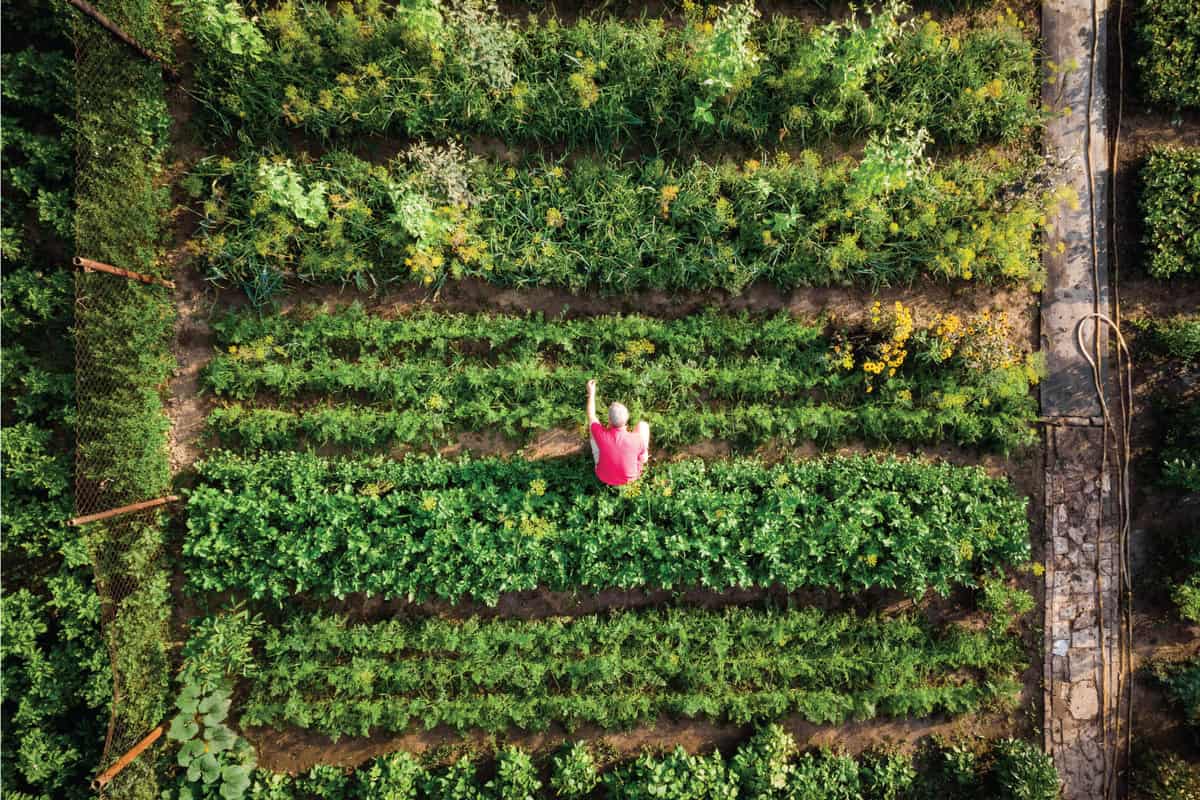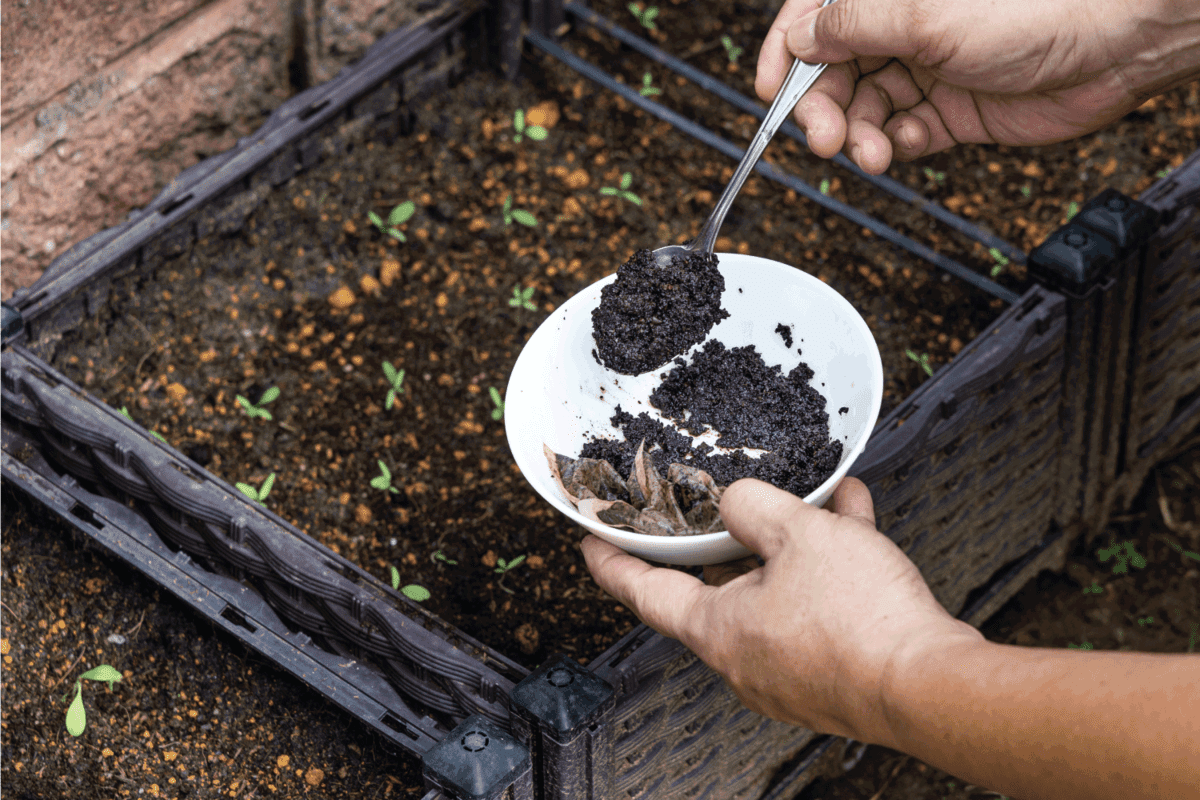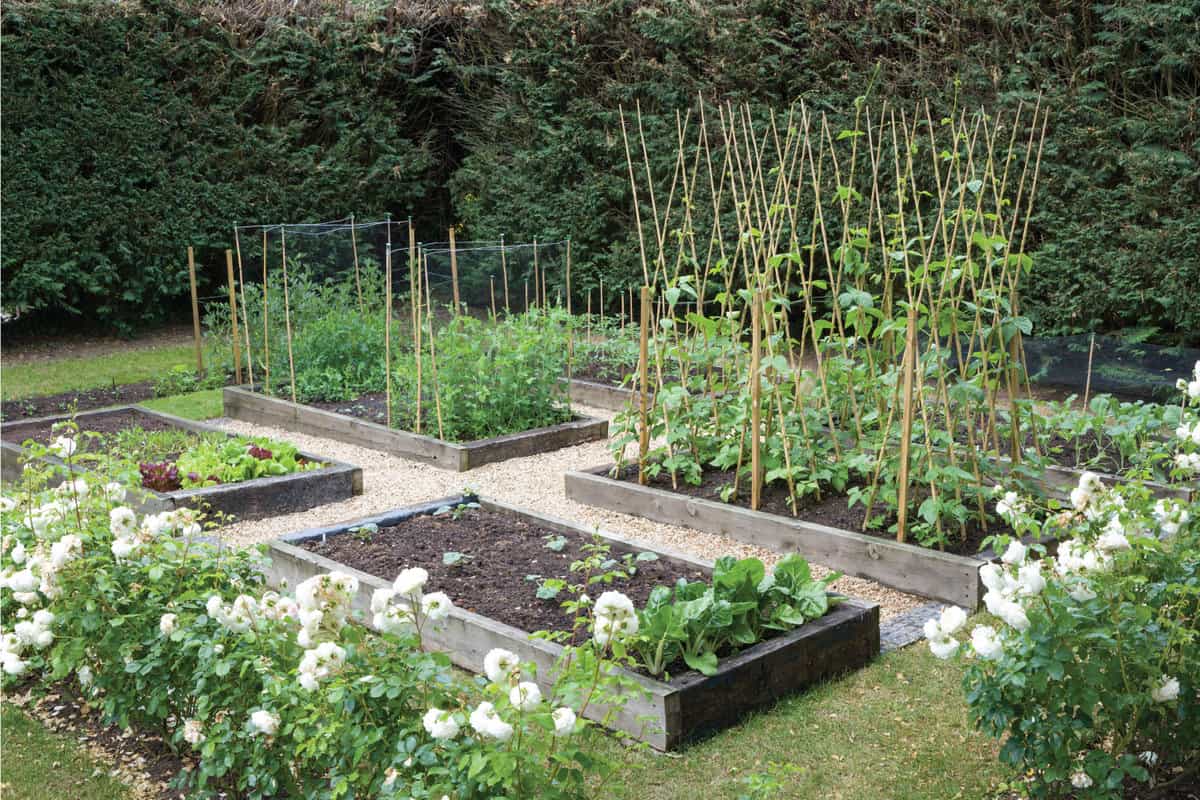Most people who are new to gardening don't know the importance of proper row spacing until the consequences begin to show up. It is wisest to leave enough space between plant beds and there are good reasons behind that. To help you with this process, we researched how far apart garden rows should be and why.
Plant beds should have a minimum of 18 inches of space between them. The space between the rows allows easy access when working around the plants. Maintaining the recommended space between the rows also gives the plants more room to grow and discourages competition.
In this article, we'll take a closer look at best practices with garden row spacing. The wrong layout can lead to problems down the line, but don¡t worry. Just keep on reading to learn more of the ins and outs of gardening layout and spacing.

How Far Apart Should Garden Rows Be?
More often than not, it's best practice to leave at least 18 inches of space between garden beds and at least 36 inches when growing large plants. You'll reap the benefits from following the recommended spacing sooner than you might expect.
Let's take a look at some issues regarding your garden layout.

Row Spacing
The type of plant will determine the ideal row spacing. Big plants with growth habits that spread out over a wide area such as cucumbers and melons should have their plant beds spaced by 36 inches. You'll need a bigger space, at least 60 inches, if using a rotary tiller to control weeds. Beets, carrots, and lettuce under ideal living conditions still grow well with only 12 inches of space between the rows.
Plant Spacing
Plant spacing is as important as row spacing whether you are planting the same kind in one bed or different types of plants. The recommended space varies according to the plant. Small plants such as peas, lentils, and beets, which also do not have sprawling growth habits, should be fine even getting only a few inches of space between each plant.
Choose your plant and know the ideal spacing prior to sowing or transplanting. You should also not place two plants in one bed that are far different in size and growth habits.
Garden Layout
While you most certainly can grow plants without a layout, you will thank yourself later if you create and follow a plan. Remember that the ideal area for growing plants should have access to sunlight, water, and healthy soil. The temperature is another growing factor which is why you should plant species in season.
Rows
Planting in rows is as easy and straightforward as the name implies. But while you basically only need to plant in a straight line, you should also do this strategically so that all your crops receive enough sunlight.

In this case, keep in mind that the sun rises in the east and sets in the west. Planting tall crops such as corn on the east side will block the sunlight in the morning. It is wisest to place tall plants in the northern area of the garden, whereas tomatoes and other middle size plants in the middle section and smaller plants like lettuce heads in the southern part.
Four Square
Imagine a square garden bed divided equally into four squares. An advantage of using a four-square layout is you can have four types of plants in one bed. To grow plants successfully, choose species that adapt to the same soil conditions.
Alternatively, you should assign the plants following this order: heavy feeders, middle feeders, light feeders, and soil builders. The heavy feeders should occupy the top left square and the rest follows the counter-clockwise pattern.
It is worth mentioning that a four-square garden layout also suggests performing crop rotation. You might need to rotate the crops so that all of them get to occupy the other squares. Doing so improves the quality of soil and avoids plant diseases.

Square Foot
The square foot layout is quite similar to the four-square perspective but each of the squares measures one foot on all sides. Your advantage to having a square-foot garden layout is that you can have as many squares in one bed as the space of the garden permits. This type of garden layout also gives you the advantage of higher yields.
When using the square foot layout, remember that you'll still need to observe proper plant spacing. To get the number of plants ideal to grow in one square, you should divide the size of the square (12 inches) by the crop's recommended plant spacing. So for beets that require at least 3 inches of plant spacing, you should have four plants in one square.
Raised Garden Beds
Now that you know the different garden bed layouts, you may choose to level up the setup. Regardless of the type of layout, you can raise the garden beds from the ground by some inches. Raising the beds may or may not require lining the beds with wood panels around the corners.
Using a raised bed layout improves drainage during rainy days and reduces pests. You might, however, find this a bit more complicated to set up since you will be constructing boxes to fill with soil. On the other hand, a raised garden bed layout is a great solution if the area you live in has non-ideal soil for gardening.
You may also use ready-made containers instead of making plant boxes from scratch such as the one below.
You may view this galvanized raised bed container on Amazon.
Container and Vertical Gardening
If you have a small area and find row spacing to be quite challenging, setting up a vertical garden can be the trick. Instead of planting directly on garden beds, take advantage of the vertical space. You can set up plant holders on walls or use plant baskets to create a tower of plants. You can also grow plants vertically with stackable containers.
View this 5-tier vertical garden bed on Amazon.
Raised Garden Bed Vs. Flat Garden Bed
Both flat and raised garden beds will produce healthy plants and high yield when cared for properly. If you are new to gardening and are choosing between the two, you should first know that going for the former is the cost-efficient approach.

Flat garden beds allow you to make use of the existing soil and simply enhance it by adding organic matter. They also require less work to make, since you only need basic equipment to dig and loosen up the soil. On the other hand, flat garden beds are usually more prone to weeds and pests. You might need to be more hands-on to keep them ideal environments for your plants at all times.
Raised garden beds often require some spending as you construct the borders to enclose the beds. Alternatively, you will need to purchase ready-made ones which can sum up a considerable amount when creating multiple garden beds.
While this can be an issue, you might still want to consider raised garden beds as the type offers many advantages. Raised garden beds provide better drainage, are more weed and pest resistant, and have better protection against foot traffic.
If you live in an area where the soil is too compact or rocky, this can be an ideal solution as well.
Why Is Row Spacing Important In Gardening?
Maintaining enough space between your garden beds is important. As your plants grow, their parts develop and change in size. Keep in mind that each plant needs its roots, stems, and leaves to have ample room for growth. Appropriate spacing gives them room both under and above the ground so they can reach full maturity without compromising growth.
Row spacing also reduces competition among the plants. Your crops do not just compete on sunlight and water but on nutrients as well. A proper garden layout and correct bed spacing contribute to higher yields. Additionally, sufficient spacing ensures all your plants get a good dose of fresh air all the time.
Your plants are on the safer side against pests when they are not sitting too close to one another. This also helps stop the spread of diseases. While you can rely on pesticides, remember that improper use of chemicals can cause plant death and injuries.

Final Thoughts
Spacing the garden beds appropriately simplifies working around your plants. It makes weeding, cultivation, and watering a lot easier. With enough space, your plants also get the right amount of water, air, sunlight, and nutrients they need.
Did you enjoy reading this post? Here are some other good reads you might enjoy:


